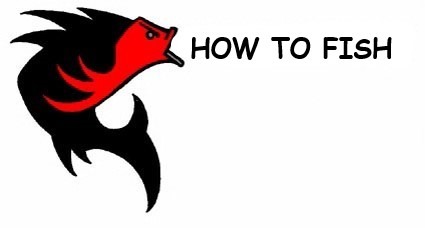A simple fishing rig that will do all the work for you
Years ago I did a lot of fishing with homemade rigs that got the fish doing all the work to hook themselves.
I really enjoyed doing this when I was fishing with friends or camping. It let me just cast in my bait, sit back and talk to my mates and I didn’t need to hover next to my rods waiting for the tip to move…I could chill and let the fish do all the work ….
…that’s how I discovered self-hooking rigs.
Discovered by accident
I was fishing the Murray River and I needed to cast a long way out into a heavy current. Rains over the previous week added a lot more water and the flow was unusually fast.
I needed heavier weight to hold onto the bottom so I put on a much larger sinker than normal.
I started with a running sinker and got a few bites but was not focused on my rod and missed every fish.
Finally I hooked a nice golden perch, and when I reeled in I discovered that the sinker was tangled in the mainline and was not running. It was fixed in place….so this fish had hooked I Itself- the weight of the heavy sinker had pulled the hook into the fishes mouth the moment it swam off.
If I’d had a running line the fish would have more slack in the line and plenty of chance to spit out the hook…especially since I was not there to strike into it.
Since this rig had worked I decided to see if was worth trying again so I kept the sinker fixed for the rest of the session.
The result – I managed to hook a reasonable Redfin and a big carp…so the rig seemed to work!
Making the rig
After this I started making rigs that worked with this self-hooking method.
I started to play around with surf rigs and ideas from Europe using wire coils that you could mould berley onto. These rigs caught me fish in both fresh and salt water.
All you needed was a coil wire you could mould Berley onto and some weight to make it self hooking.
To make the coils I’d use some spare wire I had lying around .
I’d straighten the wire out and then bend it around a pencil to create a coil but leave the ends straight.
On one end I push on a large ball sinker with enough spare wire to bend a loop to join a short trace and hook.
On the other end I’d also slip on a swivel and bend a loop to hold it on. I’d tie my main line to this.
The final result was a coil of wire with the 2 ends bent into loops.
One loop had a swivel and was joined to the main line.
The loop on the other end had a trace and hook.
I made many of these with different sized ball sinkers attached for different water conditions.
Early success
I had some real success with these rigs.
I recall one session fishing the Rye surf beach on the Mornington Peninsular where I pulled in a heap of large mullet and good sized salmon. The fish absolutely smashed the bait.
Attracting the fish
The final part of the rig is a sticky berley made from bread, cat food and potato.
You just boil the potato till it’s soft then mix it with a bit of cat food and some fresh white bread.
The bread makes it sticky, the cat food gives it smell and the potato gives off a cloud into the water that attracts the fish.
If you mix all this up and keep moulding it with your hands it will turn into a dough like consistency that is easily moulded onto your coil.
This becomes a slow release berley that really attracts fish.
The process
When you fish – just mould the berley on your coil, cast to your target area and tighten up your line without winding in. You don’t want to move your rig once it hits the bottom.
Every 15 to 20 minutes wind in and repeat the process. The fish will eventually be attracted by the smell and colour in the water and come searching for your bait.
Now you’re in business!

2 Responses
iwill give your idea a trial later in the year in the Edwards for Yellow belly
Thanks Malcolm.
I look forward to the results